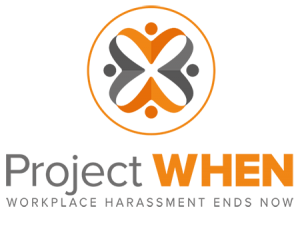Critical Influence™: Communications
The role of communication in workplace change management
 Communication has always been a critical part of running an organization. Without it, ideas remain unspoken and collaboration is stifled. The power of communication in the business world can be seen in great leaders who know how to motivate their teams through encouraging words and in employees who are comfortable sharing their innovative ideas.
Communication has always been a critical part of running an organization. Without it, ideas remain unspoken and collaboration is stifled. The power of communication in the business world can be seen in great leaders who know how to motivate their teams through encouraging words and in employees who are comfortable sharing their innovative ideas.
In the context of managing change, communication is an essential tool. Effective communication from the organization to affected stakeholders is a crucial piece of the workplace change management puzzle. The manner in which changes are communicated can make or break the entire transformation.
This is why it is important for companies to focus heavily on their communication efforts during times of change. Thoughtful communication—timely, properly reinforced, and connected holistically to other organizational changes—enables organizations to educate and secure buy-in from the workforce on the changes being implemented.
It is also beneficial to think about the best approach to spread the word about change. Far too often, communication regarding change in the workplace focuses on what employees will be losing and comes across as an apology. A negative tone can heighten resistance and impede the successful implementation of a new workplace strategy.

As part of the 15 Critical Influences™, this page on Communications is integrated with actual content from the book Innovations in Office Design: The Critical Influence Approach to Effective Work Environments™ by SCG Founder Diane Stegmeier.
Communication as a tool for transforming resistance into change acceptance
Consider the example of a law firm transitioning associates from assigned cubicles and private offices to unassigned seating in a shared space environment.
While recent trends in workplace strategy have companies embracing activity-based working, legal office environments and law firm cultures tend to be traditional and hierarchical. As a highly-educated workforce, attorneys, especially senior associates and partners, often conflate their standing in the firm to the size of their office. Undoubtedly, this will be met with some resistance.
In this case (and to be clear, more than convincing communications will be needed to get timekeepers on board with a massive corporate real estate change!), communication pieces such as newsletters, email announcements, and partner talking points should all (remember properly-reinforced?) convey how individuals are not losing their dedicated workstation, but rather are gaining ownership of an entire new office environment.
Communication should stress the variety of different spaces that can support the multitude of tasks attorneys need to complete throughout the workday. By educating end-users on design intent and how to best use individual areas (touchdown spaces, workstations, and focus rooms, and separately, collaboration zones like huddle rooms, breakout spaces, and lounge areas), affected stakeholders can begin to wrap their head around how work is changing and start the process of taking ownership of their new workplace.
Sequencing of communication during the change process
Communication mechanisms in managing change initiatives should include mindful consideration of the flow of information. Organizations that are most successful in driving workplace change tap into multiple media to get their messages across. It is not enough, for example, to distribute a single announcement from the vice president of corporate real estate describing the decision to move all managers out of private offices into the open plan.
 Effective communications during change management is characterized by an organized sequencing of information. To ensure the success of the initiative, it is important to create a comprehensive communications plan that details the sequence of change-related events, its respective timing, and the people involved.
Effective communications during change management is characterized by an organized sequencing of information. To ensure the success of the initiative, it is important to create a comprehensive communications plan that details the sequence of change-related events, its respective timing, and the people involved.
The sequencing in this roadmap usually starts with educating executives or the C-suite about the best practices in managing workplace changes and its application in the implementation of a new workplace strategy. Next, people managers and team leaders are trained and provided with talking points, so they can lead their direct reports through change. The ultimate goal is to prepare employees for new ways of working.
Communication is a two-way process. If information is flowing in one direction only, the audience perceives the message to be a lecture or an edict, and thus, “change is being done to them.” Better to encourage employee feedback as a means of engaging the workforce in the change process.
For example, strengthening employee engagement can be achieved with the establishment of a group or a council of change agents in charge of representing the voice of their peers. This allows the company to keep its ear to the ground and get ahead of rumors that might be making its rounds in the workplace. Conducting a change readiness assessment or pre-change survey is also a good way to understand employee concerns and identify points for improving communication content or creating more tailored messaging.
The forms of communication in change management
Years ago, Vladimir Pravotorov, editor-in-chief of Human Resource Management (HRM) Magazine in Moscow, Russia, interviewed SCG Founder Diane Stegmeier. She was asked to comment on “storytelling, corporate myths, and legends” and how organizations in the United States apply this type of communication in the context of change management.
The interview centered around the specific topic of internal branding as a communication mechanism in the context of change management within organizations in the United States. Here are the key thoughts from that interview:
Corporate Storytelling and Internal Branding in Corporate America
Communications is one element of the Critical Influence System™, and corporate storytelling falls within this important category that must be taken into account throughout the change management process. Storytelling, often called internal branding in the United States, serves the purpose of positioning the desired organizational culture in the minds of employees. It also acts as a support mechanism for companies’ strategic plans for the attraction and retention of talented employees.
“Some corporate stories may be internal messages, intended to guide employees in making decisions in their day-to-day work lives. An example of this is a manufacturing client with whom Stegmeier Consulting Group worked. The organization had been very operations-driven, and over time, customer service representatives made decisions to please their internal supervisors and managers rather than make decisions in the best interest of the external customers. Stegmeier Consulting Group developed a comprehensive change management plan focused on customer centricity. Our work involved educating the company’s executive leadership team on the importance of clearly communicating to all new hires and existing employees that each person was to perform his or her job with customer service excellence at the center of all they did. Specific examples of customer service representatives who had exceeded client expectations were gathered and woven into Centricity Training, which was mandatory for all representatives.
“Stories may be necessary to help employees understand the need for change when a company is restructuring, acquiring another company, or merging organizations. Sharing new information in an honest manner can increase employees’ trust in the organization’s leaders. In cases such as this, the stories provide explanations of why changes must take place. The message may not be what employees want to hear, but they appreciate the honest delivery of the information. To help train clients, educational workshops such as Straight Talk About Reorganization (STAR) signal to the members of the workforce that they are an important part of a changing organization, and that their enthusiastic participation in events surrounding the changes is much needed.
“Lastly, corporate stories may be geared towards external audiences. More and more companies in the United States are challenged with the need for highly skilled, younger workers as the entire wave of baby boomers (the generation of 75.8 million Americans born between the years 1946 and 1964, inclusive) face retirement. Many organizations have developed strategies to become an employer-of-choice, or are aggressively competing in local, regional, and national competitions such as the Fortune 500 Best Places to Work®. Companies share examples of what it’s like to work at their establishment. Businesses often involve their marketing or public relations departments to create an information portfolio that includes stories aimed at getting potential employees excited about coming to work for that organization.”
As you can see, integrating corporate storytelling into the change management process helps employees gain a better understanding of why change is happening. If corporate communications delivers the messaging in an effective manner, the narrative can help chip away at the resistance from the affected individuals, making the life of change managers that much easier.
Let’s shift gears to how communication can be aided by improved workplace design, and importantly, how communication plays a pivotal role in introducing changes to how employees work, both in and out of the office.
Positioning the physical workplace in corporate communications to enable transformation
The messages from senior executives may provide the who, what, when, and how of the imminent changes employees will face, but the physical workplace provides the where. It is the context in which the change occurs.
When an organization has strong leadership that values the importance of clear and effective communication, changes are more likely to be aimed at improving the environment where communication takes place.
A physical workplace environment that incorporates a variety of spaces to accommodate and invite interaction will support the goal of improved communication. Examples of this are illustrated in well-planned solutions that encourage communication, whether in a meeting for a large group that is arranged in advance or in a spontaneous exchange of information by two colleagues over coffee.
How an organization in the pharmaceutical industry developed an effective communications plan to enable change
When a client in the pharmaceutical industry merged with one of its former competitors, the organization began developing a strategy for the transformation of the workplace to facilitate its business drivers—building the new consumer health care product portfolio and increasing the speed of product commercialization.
The new office would need to support new behaviors focused on collaboration and innovative results. This firm was passionate about the impact communications would have on the workplace project, as evidenced by the director of communications who had been appointed to the core team overseeing the physical space project.
The communications plan for informing employees of the numerous changes affecting them was carefully developed and executed throughout the entire workplace project. One collateral piece was especially notable. It was a colorful brochure entitled “Day One,” which articulated that the employees of the merged companies were linked by more than a common name and vision; they were also linked by their computers, videoconferencing, phones, and emails. This corporate communication was, itself, about communication.
In this brochure, the communications, marketing, and information technology teams had joined forces to anticipate as many questions as possible on the first day in the effort to communicate effectively to the newly merged enterprise. The cross-functional group addressed, in advance, any potential confusion that might surface. New workplace protocols established a heightened awareness of sound levels in communicating in a much more open office environment.
The brochure also contained how-to sections, ranging from common questions related to a new instant messaging platform being introduced to guidelines for using the templates for letters, faxes, and PowerPoint presentations, each of which were ready to incorporate into employees’ daily tasks on day one.
Communication services to help you get critical messaging across
Companies need an effective approach to communication to help employees understand why changes are being introduced in the workplace. If you’re looking for expertise in communications to guide you through a change initiative, fill out the form below and get in touch.



